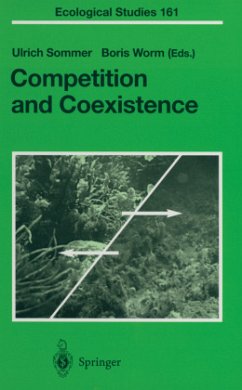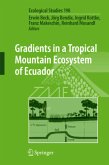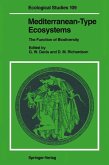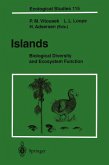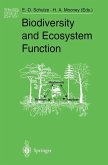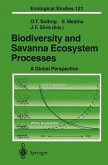The question "Why are there so many species?" has puzzled ecologist for a long time. Initially, an academic question, it has gained practical interest by the recent awareness of global biodiversity loss. Species diversity in local ecosystems has always been discussed in relation to the problem of competi tive exclusion and the apparent contradiction between the competitive exclu sion principle and the overwhelming richness of species found in nature. Competition as a mechanism structuring ecological communities has never been uncontroversial. Not only its importance but even its existence have been debated. On the one extreme, some ecologists have taken competi tion for granted and have used it as an explanation by default if the distribu tion of a species was more restricted than could be explained by physiology and dispersal history. For decades, competition has been a core mechanism behind popular concepts like ecological niche, succession, limiting similarity, and character displacement, among others. For some, competition has almost become synonymous with the Darwinian "struggle for existence", although simple plausibility should tell us that organisms have to struggle against much more than competitors, e.g. predators, parasites, pathogens, and envi ronmental harshness.
From the reviews:
"... I found this book easy to read, with a concise and consistent style across chapters. Figures were clearly presented and effectively described. I would recommend this as a good introduction to current models and empirical studies of the role of competition in structuring communities for those not already familiar with the topic." (Ethology)
"Plant ecologists working on traditional problems of vegetation composition and tradeoffs among component species for limiting resources will derive a great deal from the book. It comprises a convenient and approachable primer on the theory of competition and coexistence and its real-life applications, and it would make for an excellent graduate-level seminar." (Plant Systematics and Evolution)
"This volume is an attempt to review and synthesize recent research on competition-coexistence relationships ... . Overall, I found this book easy to read, with a concise and consistent style across chapters. Figures were clearly presented and effectively described. I would recommend this as a good introduction to current models and empirical studies of the role of competition in structuring communities for those not already familiar with this topic." (Tad Theimer, Ethology, Issue 12, 2003)
"... I found this book easy to read, with a concise and consistent style across chapters. Figures were clearly presented and effectively described. I would recommend this as a good introduction to current models and empirical studies of the role of competition in structuring communities for those not already familiar with the topic." (Ethology)
"Plant ecologists working on traditional problems of vegetation composition and tradeoffs among component species for limiting resources will derive a great deal from the book. It comprises a convenient and approachable primer on the theory of competition and coexistence and its real-life applications, and it would make for an excellent graduate-level seminar." (Plant Systematics and Evolution)
"This volume is an attempt to review and synthesize recent research on competition-coexistence relationships ... . Overall, I found this book easy to read, with a concise and consistent style across chapters. Figures were clearly presented and effectively described. I would recommend this as a good introduction to current models and empirical studies of the role of competition in structuring communities for those not already familiar with this topic." (Tad Theimer, Ethology, Issue 12, 2003)

